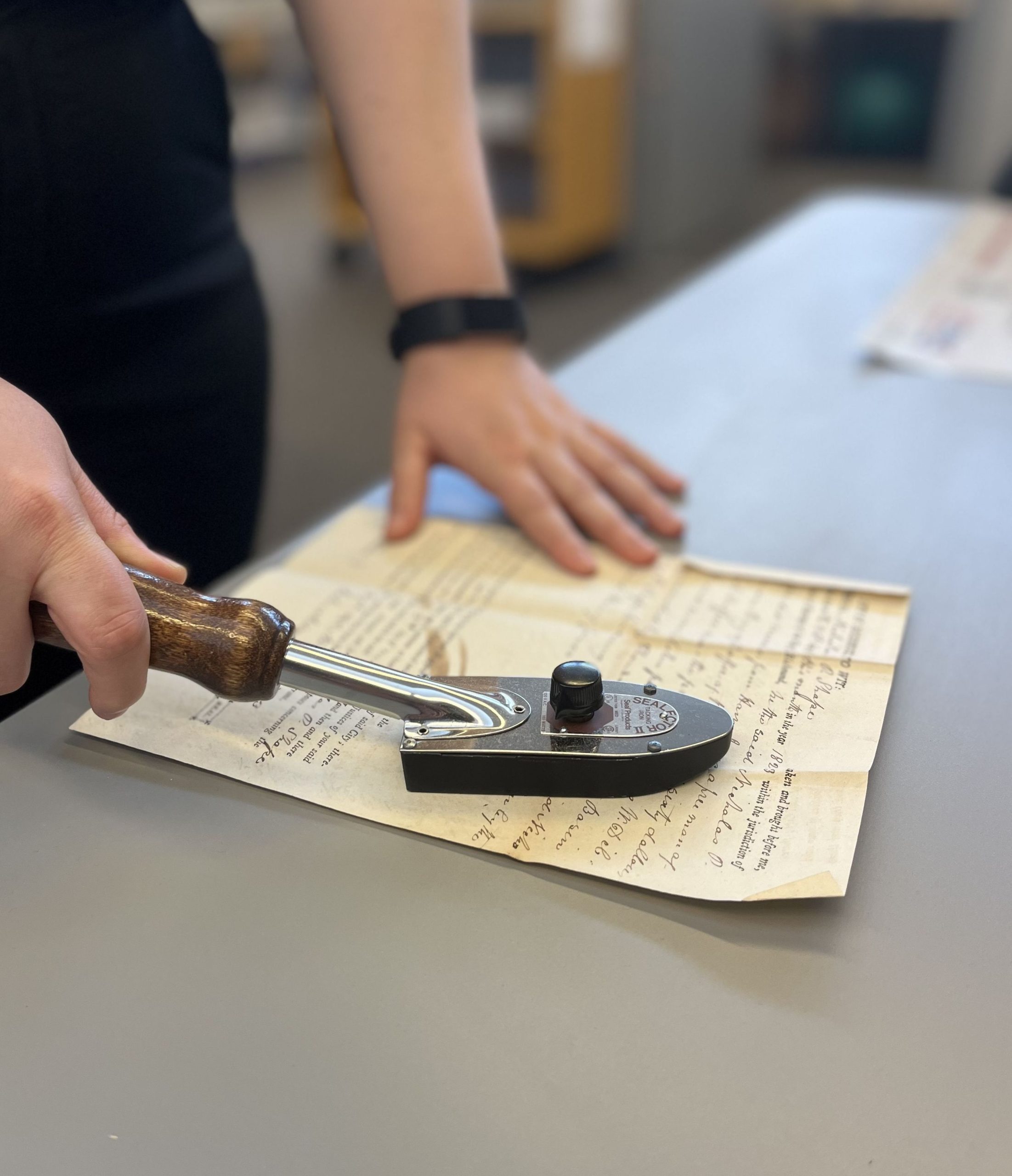Shortly after the end of the Civil War, which had a devastating impact on the commonwealth’s records, the Virginia State Library (now Library of Virginia) endeavored to help preserve the records of Virginia’s local governments. In January 1874, the General Assembly charged the Secretary of the Commonwealth (then responsible for the State Library) to survey local court clerks to ascertain what records and other historical materials they maintained in their offices.
Through the remainder of the 19th century and the first half of the 20th, the legislature gradually increased the Library’s responsibilities for preserving local government records. Numerous surveys and inventories were conducted over the years and library staff made photostatic copies of the earliest county and city record volumes for preservation purposes.
By the late 1950s, photostats gave way to microfilm as the preferred means of preserving records and making them more accessible. Microfilm was not only easier to store, but also easier to duplicate for wider distribution. Original records, which were retained, could then be retired from regular use.
Two catastrophic events in the 1970s are largely responsible for the Library’s present-day local government records program. The Botetourt County (1970) and Greene County (1979) courthouse fires motivated the General Assembly to pass Senate Joint Resolution 94 in February 1980 directing the State Archivist to “study records-keeping procedures in the Virginia courthouses.” In 1989 and 1990, with funding from the National Historic Publications & Records Commission (NHPRC), the Library and State Historical Records Advisory Board (SHRAB) completed forty preservation site surveys of records repositories, including nine circuit court clerks’ offices.
That work and information-gathering compelled the legislature to amend the Code of Virginia, §17.1-275 (A.2.), which increased the circuit court recording fees for land records by three dollars, one dollar of which was designated for preservation of the circuit court records, thus creating the Circuit Court Records Preservation Program (CCRP), managed by the Library of Virginia.
The first major mandate of the CCRP program concerns the allocation of grant funds. Circuit Court Records Preservation (CCRP) grants program consulting archivists work with local officials to identify, conserve, and make accessible the most at-risk records in Virginia’s courthouses. Over the last three decades, the CCRP grant program has awarded more than $30 million to localities in order to help mitigate environmental, security, and storage concerns. These grant funds also support professional conservation of volumes and loose records retained by the circuit courts. Whether it is providing hygrothermographs to circuit court clerks to maintain better temperature and humidity levels, or funds to remove cellulose acetate lamination from historic record books, the Local Records staff assists localities in keeping their records in the best condition possible so that important local history is not lost.
Circuit court clerks across the commonwealth face a variety of challenges in the storage of historic records. In some cases, inadequate storage space, a lack of environmental control, or staffing limitations make a transfer of records to the Library of Virginia the best option.
When custodians transfer local government records to the state archives, the materials then proceed through the second major mandate of the CCRP: processing, indexing, and description. Historically, circuit court clerks tied loose records together in bundles and then stored them in narrow Woodruff drawers. As a result, the first job of the Local Records processing archivists is to unfold and flatten the court records. During this process, archivists also mend torn items using heat-set tissue, try to remove excess dirt with brushes, and remove fasteners such as paperclips, brads, grommets, staples, or thread with micro-spatulas and pliers. Severely damaged or moldy materials go to our in-house conservation lab for specialized treatment. These efforts not only assist with preservation of the material, but also better prepare the records for digitization, if deemed appropriate. Archivists then place the materials in archival folders and boxes, which are housed in climate-controlled archival storage at either the Library of Virginia or the Library’s State Records Center in Henrico County.
During processing, Local Records archivists capture the information necessary for indexing and cataloging the records, which can include documenting names, dates, geographic locations, and historic events referenced in the material. Archivists use this information to create searchable digital collections like the Chancery Records Index and Virginia Untold: The African American Narrative, and make material discoverable in the online catalog or the Archival Resources of the Virginias database.
Although legal and procedural in function, circuit court records contain stories ranging from the curious oddity to the wildly sensational. Court records provide glimpses into domestic drama, societal expectations, family history, systems of oppression, and dirty politics. With a wide range of record types including chancery causes, coroners’ inquisitions, commonwealth causes (criminal cases), road and bridge records, public buildings and grounds drawings, and health and medical records, below is just a small sampling of the unique material and profound stories that can be found within Virginia’s circuit court records.
From those initial surveys in 1874 to today’s digital reformatting efforts, the Library has worked hand-in-hand with Virginia circuit courts clerks and other local officials to ensure that some of the earliest and most important records documenting Virginians and their communities are preserved and made accessible for future generations.
Now through the end of March, in the exhibit cases near Can Can Café in the Library’s lobby, is a display of materials documenting the Library’s local government records preservation efforts. If you are in the building for lunch, research, or a meeting, be sure to stop by and take a look.
– Mary Ann Mason, Local Records Archivist, and Vince Brooks, Senior Local Records Archivist


























